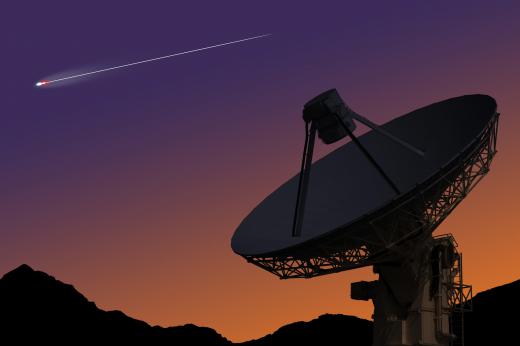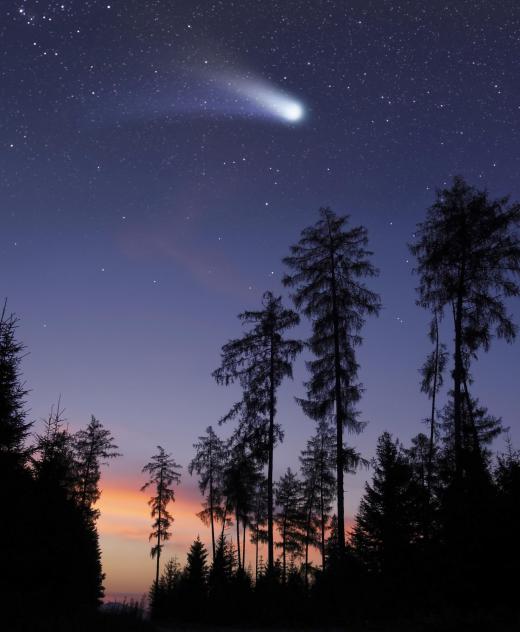What Is a Bolide?
Bolide is a general term for any object originating in space that collides with the Earth or explodes in the atmosphere. It covers meteorites, asteroids and comets. In astronomy, the term is often used to describe a meteor that is brighter than magnitude -4 — about as bright as the planet Venus — and is used synonymously with “fireball.” In geology, bolide is generally used to describe a meteorite or asteroid that leaves an impact crater, and tends to be employed where there is insufficient information for a more specific description.
The Solar System contains many objects, most of them small, in orbits that can intersect Earth’s orbit. These objects have varied compositions. Some can be described as “dirty snowballs” — dust and small rock fragments loosely held together by ice — while some may consist of dense rocks with a high metal content, mostly iron and nickel. They orbit at speeds of up to 26 miles per second (42 km/s), compared to 18 miles per second (29 km/s) for the Earth.

Depending on the direction from which they approach, they may enter the Earth’s atmosphere at up to 44 miles per second (71 km/s). At these velocities, friction with the atmosphere rapidly heats the object to very high temperatures, causing it to glow brightly. Very small objects will burn up completely high in the atmosphere, but larger objects may, depending on size and composition, hit the surface or explode in the lower atmosphere.

The majority of objects that enter the Earth’s atmosphere are around the size of a grain of sand. These burn up quickly, but are visible from the surface as meteors. Bolides that reach the surface may leave impact craters. Numerous such craters can be seen on the Moon; however, on the Earth, erosion and geological activity tend to wipe out the evidence relatively rapidly, in geological terms. There are only a few impact craters on Earth that are well enough preserved to be obvious as such; the best example is the Barringer Crater in Arizona, USA — a roughly circular crater over 1,000 yards (1 km) wide.
A large bolide collision can have a devastating effect on the planet. Apart from the immediate effects on the area surrounding the impact, large quantities of vaporized rock would be propelled into the upper atmosphere, where it would condense into fine dust. This could greatly reduce the amount of sunlight reaching the surface over the entire planet for a sustained period, killing green plants and severely reducing temperatures.
Perhaps the best-known example of a major bolide event is the one which occurred at the end of the Cretaceous geological period 65 million years ago. Evidence of a large crater, 110 miles (180 km) in diameter, dating from this time was found in the Yucatan Peninsula, Mexico, near the town of Chicxulub. It is thought that the object responsible would have been about 6 miles (10 km) in diameter.
This object is widely believed to have caused the mass extinction event that occurred at that time, wiping out the dinosaurs and many other classes of animals. Not all scientists, however, agree that the Chicxulub impact was solely responsible for this extinction event, and some think there may have been a series of large impacts. There have been several mass extinction events during the Earth’s history, and it is possible that some or all of these were caused by large bolides.
The biggest bolide fireball known to have been seen by humans was the Tunguska event in 1908, when a huge explosion took place over the Tunguska area of Siberia, causing widespread devastation. Fortunately, the area was uninhabited and there were no known human casualties, but the object’s glowing path and detonation were witnessed by a number of people in villages some distance away. Computer simulations based on the pattern of destruction have calculated the size, angle of approach and possible composition of the object, which is thought to have been a small asteroid or comet fragment.
AS FEATURED ON:
AS FEATURED ON:












Discuss this Article
Post your comments